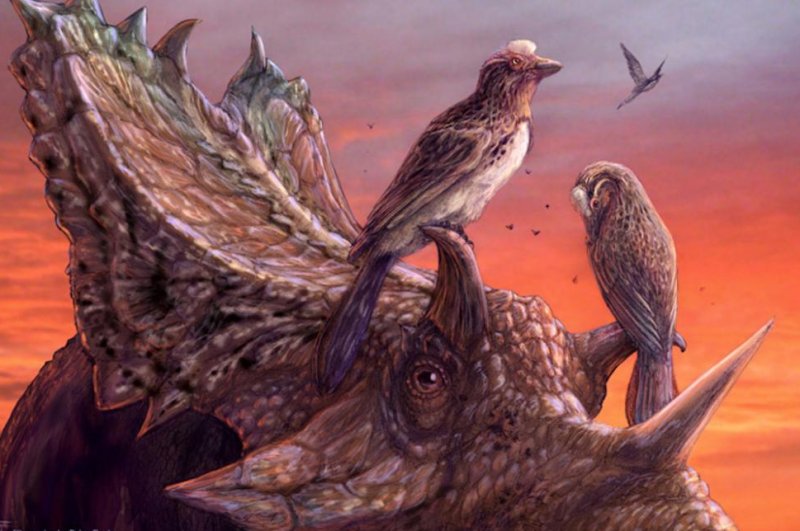Enantiornithines birds were quite successful during the Cretaceous period, living on every continent except Antarctica and thriving among other bird groups and dinosaurs between 145 and 66 million years ago. Photo by Brian Engh/University of California, Berkeley
Nov. 13 (UPI) -- The most complete skeleton of an enantiornithine bird has offered scientists new insights into the appearance and behavior of the unique group.
Analysis of the 75-million-year-old suggests enantiornithines evolved advanced flying capabilities similar to those of modern birds. The fossil -- described Tuesday in the journal PeerJ -- is an example of convergent evolution among early groups of birds.
Enantiornithines were quite successful during the Cretaceous period, thriving among other bird groups and dinosaurs between 145 and 66 million years ago. The remains of members of the group have been recovered from every continent except Antarctica.
"Enantiornithines originate well past the divergence with other theropod dinosaurs, and are more closely related to living birds," Jessie Atterholt, who helped carry out the research while a doctoral student at the University of California, Berkeley, told UPI. "They are like cousins to modern birds -- closely related, but not the same group."
Enantiornithine fossil evidence in North America is limited to Late Cretaceous, and until now, most specimens were revealed by only single bones. But the newly analyzed fossil -- recovered in 1992 by Howard Hutchison, a paleontologist for the University of California Museum of Paleontology -- is the most complete of its kind.
Previous studies of North American enantiornithines have mostly relied on leg bones, which are of limited use for analyzing the development of flight. The near-complete fossil, sourced from Utah's Grand Staircase-Escalante National Monument, offered scientists a clearer picture of the group's anatomical development.
"This fossil tells a very interesting story about bird evolution," Atterholt said. "Early enantiornithines could fly -- they were mostly sparrow or crow sized, and had full, feathered wings -- but they don't show all of the adaptations for flight that we see in modern birds."
The advanced flight capabilities evolved later, after enantiornithines and modern birds had diverged. And while most early birds, including early enantiornithines, were the size of crows and chickadees, the newly analyzed specimen -- named Mirarce eatoni -- was roughly the size of a great horned owl or turkey vulture.
"This new fossil has more advanced flight adaptations, like quill knobs on the ulna for feathers to anchor to," Atterholt said. "It's exciting to see them for the first time in this group, which shows that enantiornithines evolved such adaptations independently from modern birds."
But while enantiornithines evolved flight capabilities comparable to modern birds, they never evolved the same level of adaptability. Scientists have yet to find enantiornithine remains earlier than 65 million years ago.
"Evidence from fossil pollen and fossil plants indicates that massive, widespread wildfires occurred following the Chixulub crater impact," Atterholt said.
Researchers suspect the wildfires wiped out the forests enantiornithines relied on for survival. But the species' ecology remains unclear. Scientists hope additional analysis will help them better understand how Mirarce eatoni interacted with its surroundings.
"With a quantitative analysis of claw curvatures and reconstruction of muscles based on the bones, we will be able to learn more about whether this bird was perching or climbing or predatory," Atterholt said.















